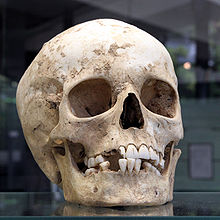
The archaeological site of Herxheim, located in the municipality of Herxheim in southwest Germany, was a ritual center and a mass grave formed by people of the Linear Pottery culture (LBK) culture in Neolithic Europe. The site is often compared to that of the Talheim Death Pit and Schletz-Asparn, but is quite different in nature. The site dates from between 5300 and 4950 BC.[1] The site contained the scattered remains of more than 1000 individuals from different, in some cases faraway regions. Whether they were war captives or human sacrifices is unclear, but the evidence indicates that they were roasted and consumed.[2]
- ^ Cite error: The named reference
Herxheim2009was invoked but never defined (see the help page). - ^ Boulestin & Coupey 2015, pp. 101, 115, 123, 126.